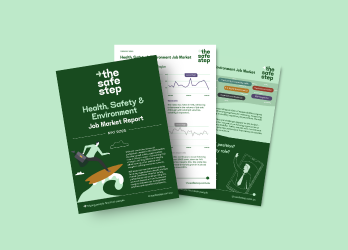Managing Psychosocial Risk at Work: 10 Ways to Improve Effectiveness
Page Published Date:
November 3, 2022
Psychosocial risk assessment and management has been around for decades, but many organisations are still poorly equipped to support positive workplace mental health.
In this blog we look at the implications of new psychosocial risk regulations around Australia and consider the practical steps employers can take to not only meet legal obligations, but do so in a way that tangibly improves the experience of people at work. Read on to learn more…
Why manage psychosocial hazards?
Whilst psychosocial safety isn’t a new concept, changing WHS legislation around Australia is creating a greater emphasis and clarity around employers’ responsibilities to prevent and manage psychological risks at work.
As a result, organisations are sharpening their focus on identifying barriers to their people’s wellbeing, productivity and performance, with the overall aim of improving their experience of work
How to manage psychosocial risk at work
In a recent Safe Step webinar expert panellists discussed a number of ways for organisations to better manage psychosocial hazards. Our key takeaways from the webinar include these top 10 tips for effectively managing psychosocial risk at work...
1. Put people first
Psychosocial risk can be complex, but try not to get lost in legislation and compliance. Let genuine care be the driver for your efforts in this space. “The challenge for business is going to be doing all this and doing good, not just doing it for compliance sake,” explains leading work health and safety lawyer, Steve Bell.
Organisations should seek to make meaningful improvements to people's experience of work. In achieving this goal, they will not only improve worker’s wellbeing, they will also improve performance, productivity, tenure and traction.
“If you manage psychosocial risks based on compliance, you're really not going to make a full difference,” explains Jane Bourke, Group Director for Safety, Health and Wellbeing at Woolworths. “This is really a value proposition around talent and how you retain the talent you've got because they love where they're working and the work environment that you have created. This is also a critical aspect in how you engage with and attract new talent to the workplace.”
“EVP has become a distinguishing factor in attracting and retaining talent,” agrees Aaron Neilson, CEO of The Safe Step. “Jobseekers are seeking workplaces where they feel safe, secure and supported.”
2. Consolidate your existing efforts
Most organisations have several initiatives already in place to manage psychosocial risk. Begin by cataloguing, consolidating and reviewing your existing efforts.
Qualitative and quantitative data will help organisations narrow their focus and identify gaps. WHS incidents, HR data, leave information and employee sentiments can all be used to build a picture of organisational psychological health.
3. Collaborate & coordinate across functions
Health and safety professionals are familiar with risk identification, management and controls, but psychosocial safety involves a broader (and sometimes blurred) set of ideas applied to the non-physical safety space.
Effectively managing psychosocial risk requires a shared ownership model across a range of disciplines including work health and safety, HR, injury management, recruitment, learning and development. “Sophisticated organisations are realising that it's actually an integrated, collaborative approach across functions that need to provide the level of governance for this to actually work,” explains David Burroughs, a psychologist who specialises in psychosocial risk management.
4. Be guided by the evidence
When mapping out your plan for managing psychosocial risk look for evidence-based resources. Search for tools and strategies that not only identify hazards, but also evaluate and respond to risks.
Tools to help you manage psychosocial risk at work:
- Codes of practice for managing psychosocial hazards including those from Safe Work Australia, NSW and WA governments. Other regions also have tools available.
- Copenhagen Psychosocial Questionnaire (COPSOQ) is an international instrument designed for the assessment and improvement of psychosocial conditions in workplaces and for research purposes
- Thrive at Work Framework - helps organisations to navigate the wealth of information on mental health at work.
- People at Work Framework - a validated Australian psychological hazard identification survey
- Flourish DX – a tool to help identify and assess psychological hazards; implement and review measures to control risks; and investigate psychological harm incidents.
- The SMART work design model - provides a framework to design meaningful and motivating work.
- Mauren Dollard is Professor of Work and Organisational Psychology. Watch her SafeWork NSW presentation here
Use these tools cautiously, especially if you don’t have plans in place to address responses/issues identified. Asking questions, but not acting on the information provided may cause more harm than good.
Seek expert advice to understand the different metrics and approaches in market.
5. Demystify psychosocial risk
Psychosocial risk is a technical term that has the potential to cause anxiety within organisations. Steve Bell recommends getting rid of impenetrable language and demystify the concept for c-suite and other senior leaders. He suggests framing the topic as a vehicle to discuss the experience of people at work and the stress levels they might experience, which could be potentially hazardous.
“Stop talking about psychosocial hazards and risks and actually just use layman's terms when you're talking within your organisations,” agrees Jane Bourke.
Providing a clear framework is another way to help leaders understand the different components and the actions required.
6. Start with your obvious pinch points
Don’t set out trying to do everything at once. Instead, focus on what's reasonable. Start with obvious pinch points in the organisation and filter down from there.
“Intuitively you will already be attracted to a small handful of things where you will turn the dial and do some good,” says Steve Bell. “Pick the things that are likely to be either the most common types of risks, or those which can have the most significant harm, and then work on either end of that spectrum. Slowly move through by making impactful and repeatable changes – you can’t do it all on Day 1,” he says.
Jane Bourke supports a test and learn approach, stressing the importance of involving team members in the process and asking for feedback.
7. Empower your line leaders
Given that line leaders are often the first to witness the nuances and variable impacts on their people, David Burroughs recommends empowering them as the first line of defence. “Look at what can be done at the localised level. Most of the reasonable adjustments can actually be done by a leader. They don't necessarily need to go through to the Head of Health Safety Wellbeing, or Head of HR to mitigate the risk,” he says
Relevant training should include ways to support leaders in understanding, identifying and responding to the organisational barriers to workplace mental health
8. Fix the workplace, not the worker
“Things like wellness awareness and resilience training are manifestly ineffective from a workplace perspective,” says David Burroughs. “They focus on the individual, not the organisational barriers to wellbeing, and in some cases, they actually have a perverse impact on risk profiles within the organisation,” says David Burroughs.
“Organisations we’re working with are desperately trying to find ways to invest in a trusting process for issue or complaint escalation. They are exploring the new expectations of transparency and creating an ability to deal with the truth of the lived experience at work in a way which is focussed on improvement,” explains Steve Bell
Beware of looking for quick fixes. Managing psychosocial hazards and harm requires a nuanced approach and takes time to effect lasting and meaningful change.
9. Refine job design
The way work is designed can influence whether we feel motivated, engaged, bored, or stressed at work. As the way we work changes, organisations should invest in improving job design capabilities within Human Resources teams.
The SMART work design model is one of several resources available to guide the design of meaningful and motivating work.
Employees can also be involved in the process. Support them to engage in role crafting to improve their own experience of work
10. Bring in the experts
Has your health and safety/human resource team got the capabilities and experience to properly manage psychosocial risk in the workplace? Do you need assistance developing a psychosocial risk strategy? As Australia’s leading recruitment and search consultancy specialising in Health, Safety, Environment and Wellbeing, we can connect you with wellbeing specialists on either a permanent or temporary project basis.
If you are needing support or guidance in framing a new evidence-based wellbeing initiative, we can assist in scoping the project, understanding your resourcing needs and help connect you with the right HSE people to deliver with impact.





